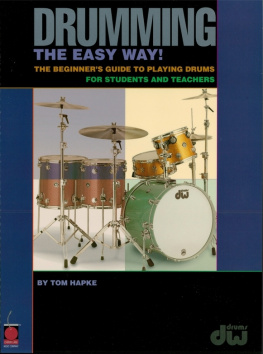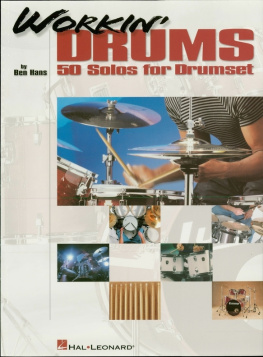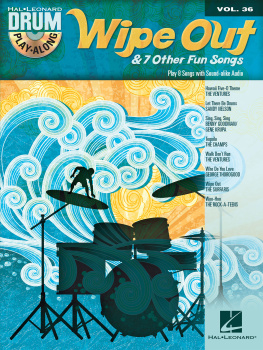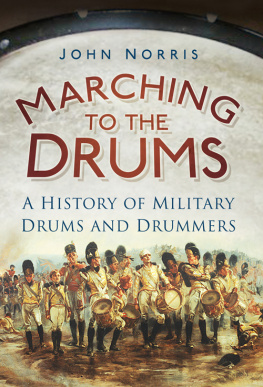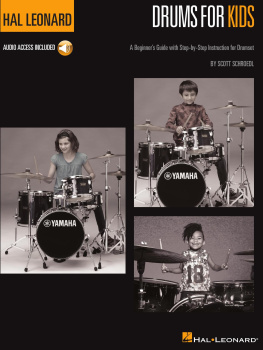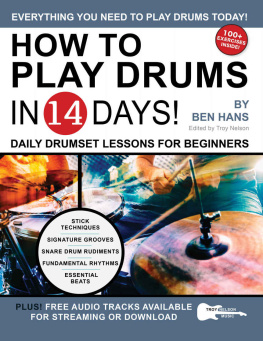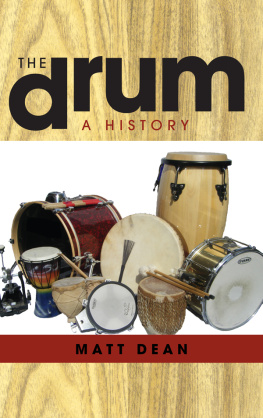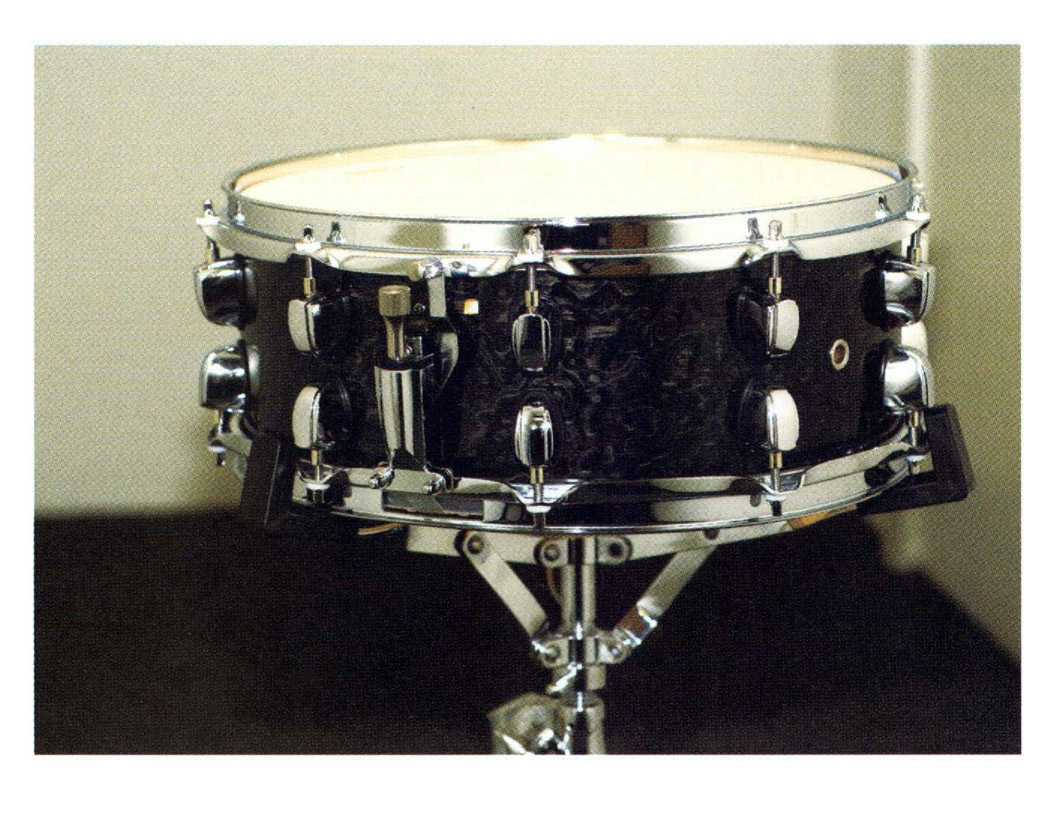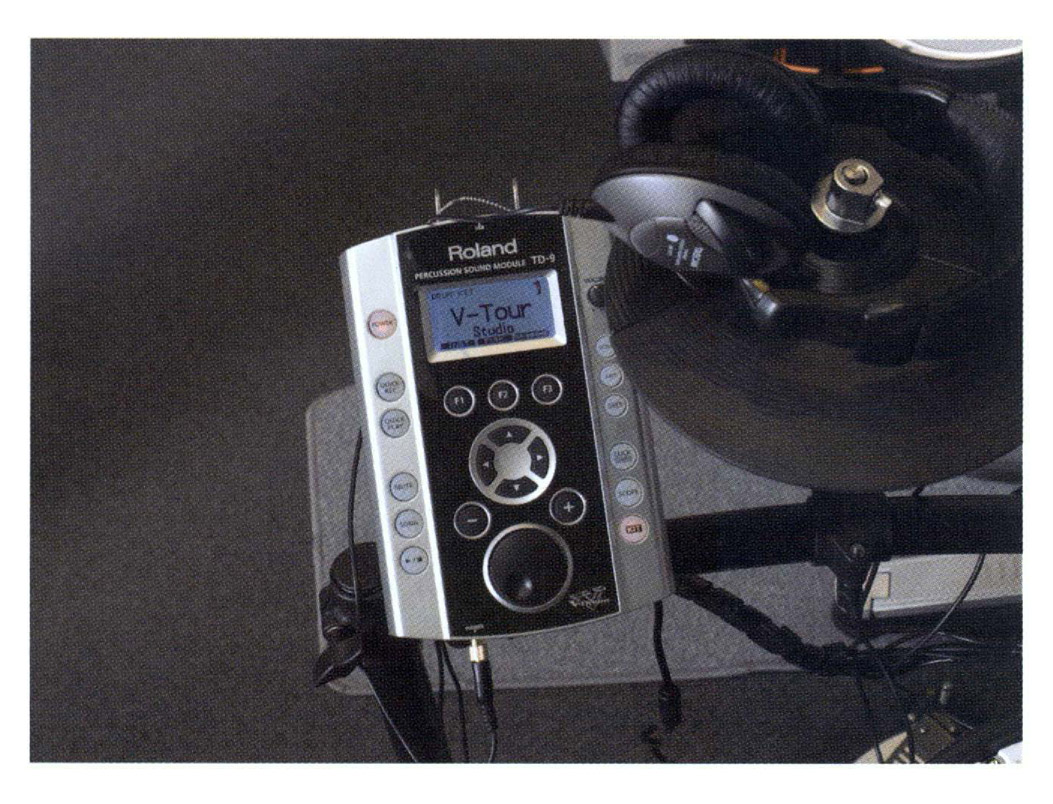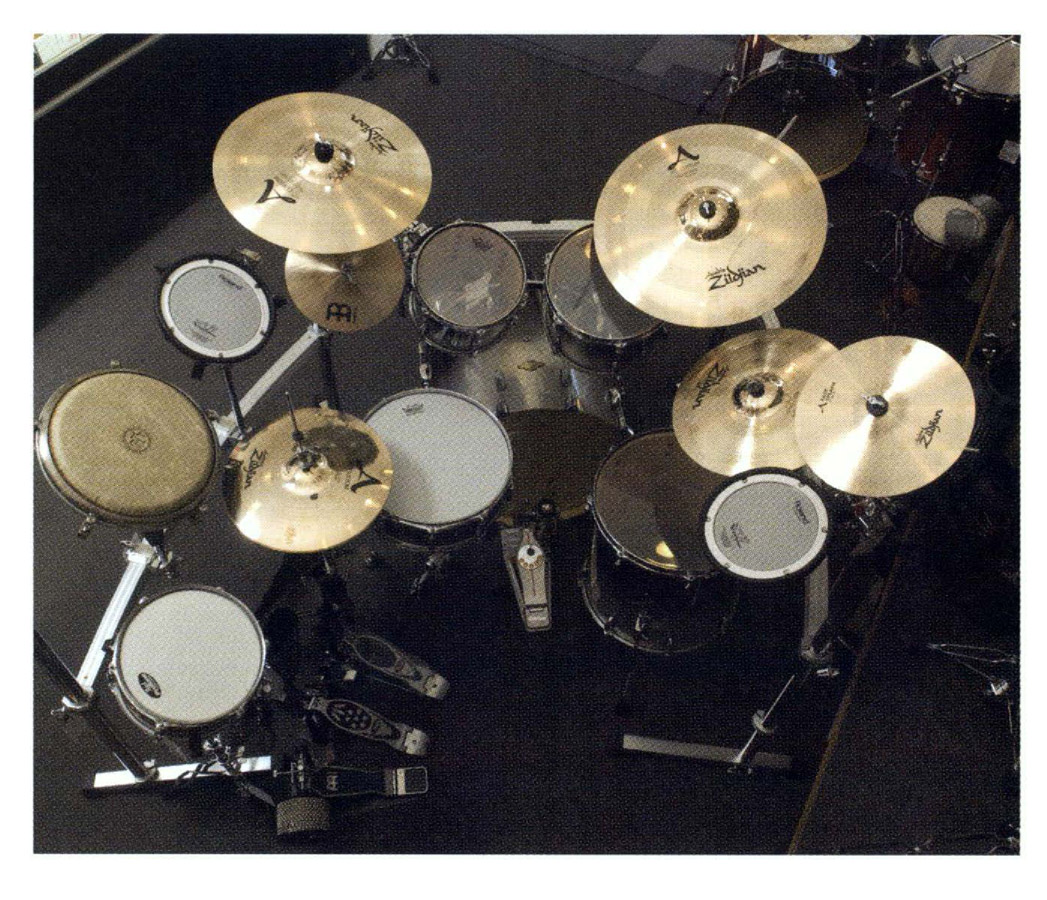DRUMS FOR EVERYONE
Copyright 2010 by Morris Book Publishing, LLC
ALL RIGHTS RESERVED. No part of this book may be reproduced or transmitted in any form by any means, electronic or mechanical, including photocopying and recording, or by any information storage and retrieval system, except as may be expressly permitted in writing from the publisher. Requests for permission should be addressed to Globe Pequot Press, Attn: Rights and Permissions Department, P.O. Box 480, Guilford, CT 06437.
Knack is a registered trademark of Morris Book Publishing, LLC, and is used with express permission.
Editor: Katie Benoit
Cover Design: Paul Beatrice, Bret Kerr
Interior Design: Paul Beatrice
Layout: Kevin Mak
Music Engraving by Richard Gratton
Cover photos Shutterstock
Back cover photo by Alex Solca
Interior photos by John Klicker with the exception of photo page 32 by Charles Stewart, page 107 left by Dmitry Vinogradov/Shutterstock
Library of Congress Cataloglng-in-Publlcation Data is available on file.
ISBN 978-1-59921-777-2
Printed in China
10 9 8 7 6 5 4 3 2 1
The information in this book is true and complete to the best of our knowledge. All recommendations are made without guarantee on the part of the author or Globe Pequot Press. The author and Globe Pequot Press disclaim any liability in connection with the use of this information.
For Mary and Charlie Appice
Acknowledgments
Thanks to Leslie Gold for her help in this project and to all my endorsement companies for helping out, especially DDRUM.
Special thanks to:
Aquarian Heads
Calzone/Anvil Cases
DDRUM
DW Pedals
Rhythm Tech Products
Sabian Cymbals
Shure Mics
Vic Firth Sticks
Zoom Products
INTRODUCTION
Before you even pick up your sticks, there are two questions Id like you to think about. First, what makes a great drummer? And second (and more important), what are your personal goals as a drummer-to-be?
I can answer the first question for you. To me a great drummer is somebody whos got great timing, can power a band without overpowering it, understands melody, and has the technique and facility to play whatever comes to mind
As for the second question, only you can answer that. Only you know what you want to accomplish as a drummer. Maybe you just want to be able to play along with your favorite CDs. Maybe you want to get good enough to play gigs and make some extra cash. And maybe you want to become the next Gene Krupa, or Buddy Rich, or Yoshiki Hayashi orOKCarmine Appice.
Whatever your goals, this book can start you on the path to realizing them. But youll have to take it from there. Youll have to make the commitment and set aside the time thats required to be good at anything.
I started playing drums when I was around twelve. I went for lessons, and I was so Into it that I learned five years of music in three. Yeah, I caught on quickbut I also worked at it. Id practice an hour a day with my books and an hour with the stereo. I also learned chords and harmonies on the piano and got pretty good on the guitar, which came in really handy when I decided to write songs. So I always recommend that a drummer learn to play something besides drums too, because otherwise the guitarist or vocalist has the big hits and the drummer ends up driving the VW!
Drums have always provided the means for me to both express and support myself. As a kid I didnt care about becoming a great drummer. I just wanted to be like my teacher, who made a great living. He pulled in $500 a week on gigs and $150 teaching. Now, $650 a week in 1961 was big money, let me tell you. So, as a teenager I started playing weddings and bar mitzvahs, and by the time I was seventeen, I was making $200 a weekend and bought myself a new car.
The idea of Carmine Appice playing society dos might seem just a little incongruous today, but dont knock it. In one weekend Id play all sorts of music. My typical weekend consisted of a bar mitzvah, a wedding, a jazz gig, and a rock show. As a result I became very versatile and later, when I toured with everybody from Vanilla Fudge and Pink Floyd to Bo Diddley, Rod Stewart, and Ozzy Osbourne, it wasnt hard for me to adjust to different groups and artists.
So the better and more well rounded you get with the drums, the wider the music world becomes for you. But lets begin by taking a look at the wide world of drums.
The Wide World of Drums
Although the concept of the modern drum set has only been around since the early twentieth century, drums have been part of the human experience since cave men used a combination of hollowed out wood, skins, and sticks to communicate with each other, both as a form of ritual and the firstsort oftelephone.
In Africa tribes still use drums to send messages to each other from miles away, to signal meetings, announce events, or warn of danger. The talking drums of Ghana and Nigeria became a highly sophisticated means of communication between villoges; tuned to pitches approximating spoken language, they actually create dialogue that can be transmitted from as far as twenty miles away, like a walkie-talkie.
Drums have long played an essential role in the military. In the European infantry they coded commands to the soldiers in battle. The marching band contained the marching snare, the predecessor of todays snare drum; the larger and deeper toned bass drum; and hand cymbals, whose familiar crash was achieved, in the days before the cymbal stand, by hitting the cymbals together.
Until the late nineteenth century, band musicians carried their instruments, and the only way the drums and cymbals could be played was individually, by hand. Then came the big bang that revolutionized the drum worldthe drum set.
The Drum Set
The invention of the bass drum pedal in the late 1800s was the first breakthrough. This indispensable item made it possible for one person to play several percussion instruments (snare drum, bass drum, and cymbals) simultaneously. The mechanical pedal allowed the drummer to hit the bass drum with his foot instead of playing it by hand, and the cymbals could be placed on stands and played with sticks. With the bass drum on the floor and the snare drum and cymbals on stands, the drum set was born. With the addition of the low hat, a two-cymbal instrument that was operated by the foot opposite the bass drum and eventually raised up on a stand to become todays hi-hat, the basic drum set was complete.


